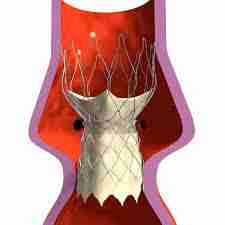The global heart valve devices market is undergoing significant growth, driven by rising incidences of heart valve disorders, technological innovation, and an increasing demand for minimally invasive surgical options. As cardiovascular diseases remain the leading cause of mortality worldwide, the importance of advanced treatment options such as heart valve repair and replacement devices has never been more pronounced. With new products, expanding healthcare access, and favorable clinical outcomes, the heart valve devices market is expected to see strong and sustained growth in the coming years.

Market Overview
Heart valve devices are used in procedures to replace or repair damaged heart valves, which regulate blood flow within the heart. The market encompasses several product types:
Mechanical Heart Valves
Bioprosthetic (Tissue) Valves
Transcatheter Heart Valves (TAVR/TAVI, TMVR)
Annuloplasty Rings and Valve Repair Devices
According to recent market research, the global heart valve devices market was valued at over USD 10 billion in 2023 and is projected to grow at a CAGR of 9–11%, reaching more than USD 20 billion by 2032.
Key Growth Drivers
1. Aging Population
A major contributor to market growth is the aging global population. Valvular heart disease is especially prevalent among individuals aged 65 and above. Countries with rapidly aging demographics, such as Japan, Italy, Germany, and the United States, are seeing a surge in demand for valve replacement and repair procedures.
2. Technological Innovation
Ongoing advancements in heart valve technology have fueled market expansion. Devices are becoming smaller, more durable, and easier to implant through minimally invasive techniques. Transcatheter Aortic Valve Replacement (TAVR), once limited to high-risk patients, is now being used in intermediate and low-risk groups. Similarly, innovations in Transcatheter Mitral Valve Repair (TMVR) and Transcatheter Tricuspid Valve Interventions (TTVI) are expanding therapeutic options.
3. Rise in Minimally Invasive Procedures
Patients and providers prefer procedures with lower risk and shorter recovery times. Minimally invasive valve procedures reduce hospital stays, minimize surgical trauma, and lead to faster recovery. As a result, transcatheter procedures are rapidly gaining popularity over traditional open-heart surgeries.
4. Increased Awareness and Diagnosis
Improvements in diagnostic tools, along with greater awareness of symptoms related to valvular heart diseases, have led to earlier and more accurate diagnoses. This has increased the number of patients being treated and helped fuel growth in both developed and developing healthcare systems.
5. Expanding Access to Healthcare
Emerging markets in Asia-Pacific, Latin America, and the Middle East are witnessing increased access to advanced cardiac care. Government investments in healthcare infrastructure, growing private sector involvement, and medical tourism are helping expand access to heart valve procedures in these regions.
Market Segmentation Insights
By Product Type
Transcatheter heart valves are the fastest-growing segment, owing to their less invasive nature and growing approval for broader patient groups.
Bioprosthetic valves continue to dominate due to better compatibility and reduced need for long-term anticoagulation compared to mechanical valves.
By End-User
Hospitals and cardiac centers remain the primary users of heart valve devices.
Ambulatory surgical centers (ASCs) are expected to see increasing utilization, particularly for TAVR procedures, as technology improves and more procedures shift to outpatient settings.
By Region
North America leads the market due to early adoption of technologies and a high prevalence of heart disease.
Europe is a strong contributor with established healthcare systems and high procedural volumes.
Asia-Pacific is the fastest-growing region, with significant investments in cardiac care infrastructure in China, India, and Southeast Asia.
Key Players Driving Growth
Several leading companies are driving innovation and expansion in the heart valve devices market:
Edwards Lifesciences: Market leader in TAVR with the SAPIEN valve family.
Medtronic: Offers a wide portfolio including Evolut, CoreValve, and mechanical options.
Abbott: Strong in mitral and tricuspid repair with MitraClip and TriClip.
Boston Scientific: Expanding presence through acquisitions and advanced structural heart programs.
LivaNova, CryoLife, and JenaValve: Notable contributors with niche and emerging offerings.
These companies are investing heavily in R&D, clinical trials, and international market expansion, positioning themselves to capitalize on growing demand.
Challenges to Consider
Despite robust growth prospects, the market faces a few challenges:
High costs of devices and procedures can limit adoption in cost-sensitive markets.
Durability issues in bioprosthetic valves, particularly for younger patients, may lead to reoperations.
Regulatory hurdles and time-consuming clinical approval processes can delay market entry for new products.
Skilled personnel shortages may impact the adoption of advanced procedures in developing regions.
Future Outlook
The heart valve devices market is poised for continued expansion, supported by:
Next-generation valve technologies with longer lifespans and improved compatibility.
AI-driven diagnostics and procedural planning to enhance outcomes.
3D printing and personalized valves, enabling patient-specific treatments.
Digital health integration, including remote monitoring and follow-up services.
The long-term outlook is especially promising as healthcare systems prioritize outcomes-based care, making heart valve interventions not only life-saving but also cost-effective over time.
Conclusion
The heart valve devices market is on a robust growth trajectory, fueled by medical innovation, demographic shifts, and rising healthcare awareness. While challenges remain, the overall potential of this market is vast. With continued investment, global collaboration, and focus on patient-centered care, the next decade will likely see heart valve therapies transform from elite interventions into standard, accessible solutions for millions worldwide.




